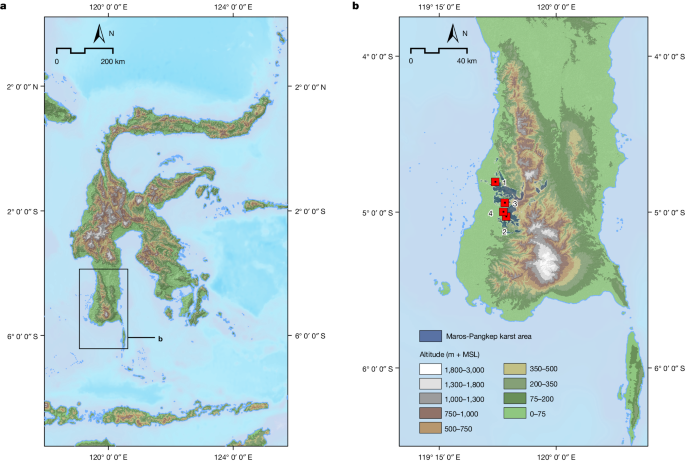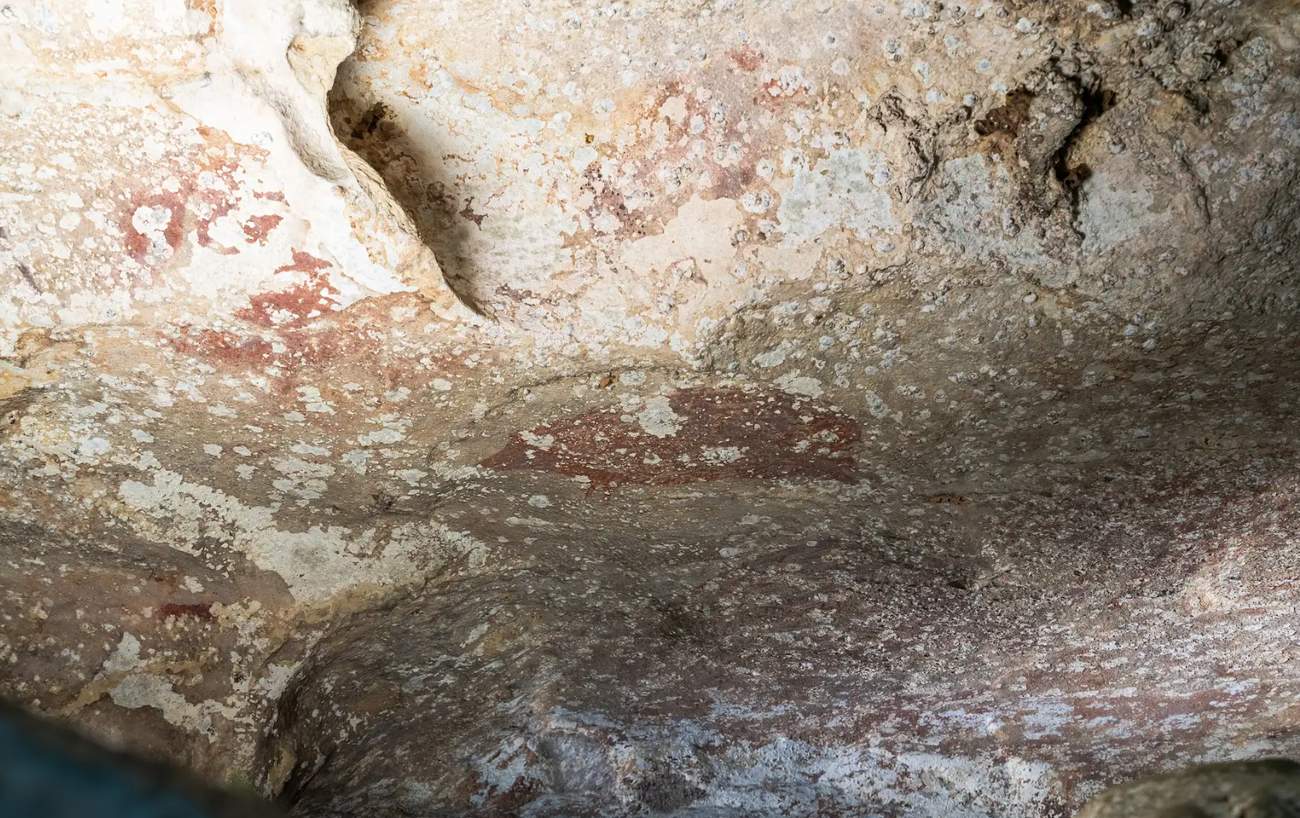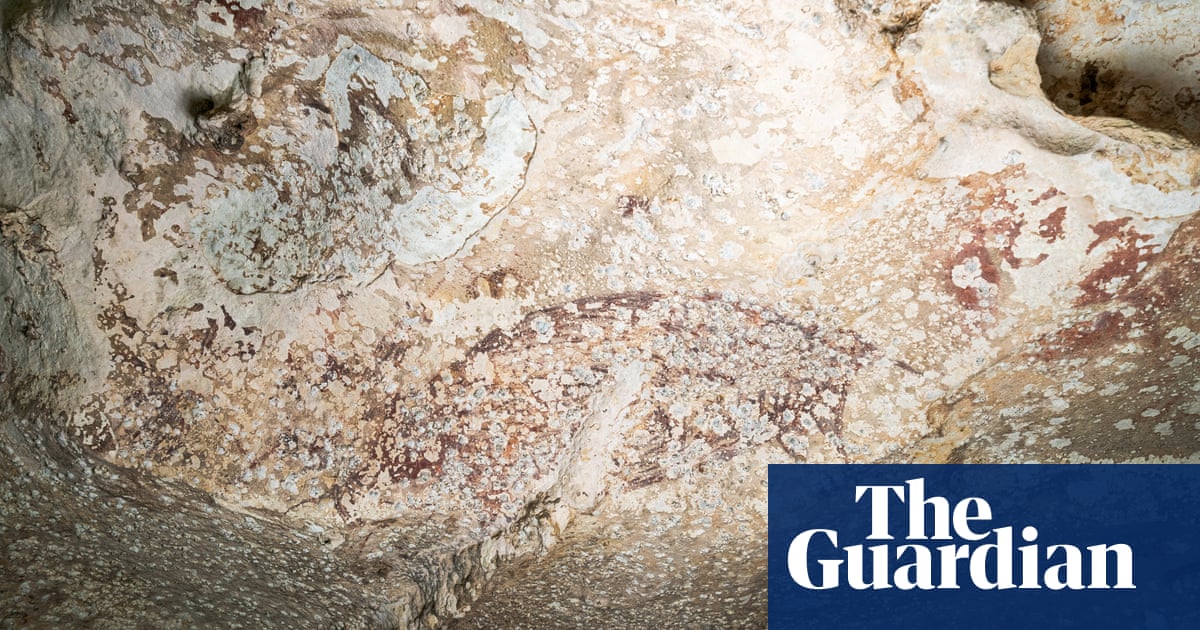On the Indonesian island of Sulawesi, a team of Australian and Indonesian scientists discovered the oldest known example of cave art. This artwork depicts a wild pig and three human-like figures and is estimated to be at least 51,200 years old, making it more than 5,000 years older than previously known cave art.

Also Read: Aswan: Archaeologists Discover Over 1,400 Mummies in Egypt
The artwork was found in the caves of Karampuang Hill located in the Maros-Pangkep region of South Sulawesi.
The painting shows a pig with its mouth slightly open and three human-like figures in various positions:
- First Figure: This figure is holding a rod with both arms extended.
- Second Figure: Positioned next to the pig’s snout and appears to be holding a stick possibly in contact with the pig’s throat.
- Third Figure: An upside-down figure with splayed legs reaching towards the pig’s head.
Neanderthals are known to have made non-figurative cave markings as early as 75,000 years ago. The oldest known figurative cave art was a 21,000-year-old panel in Lascaux, France, depicting a bird-headed human confronting a bison.
In 2019, a find in the Maros-Pangkep karst region of Sulawesi revealed a 15-foot-wide panel depicting human-like figures engaging with warty pigs and anoas (dwarf buffalos).
Researchers utilized a more sensitive dating technique called laser ablation uranium-series imaging to date the cave paintings more accurately.
This method involves analyzing much smaller calcite samples which provides a higher resolution of the age distribution on the cave walls and minimizes damage to the artwork.
Earlier studies dated cave art by carbon-dating small samples of calcite formations known as cave popcorn which accumulate over thousands of years.
The new laser technique has proven more precise and revealed that the rock artwork is approximately 48,000 years old.
The earliest known therianthropic depiction was the 40,000-year-old Lion Man sculpture from Germany.
Another oldest known drawings consisting of geometric patterns were found in Blombos Caves in southern Africa and dated back 75,000 to 100,000 years ago.
Also Read: Israel: 3300-Year-Old Shipwreck Discovered
The researchers used a new dating method involving laser cutting of tiny artwork samples enabling more precise dating.
This method could be applied to other cave art sites worldwide leading to discoveries and reevaluations of the timeline for early human creativity.
Stringer from the Natural History Museum in London believes that representational art may have originated in Africa and spread as humans migrated.
Claims of even older cave art in Spain attributed to Neanderthals, have been controversial and largely rejected by the scientific community due to uncertainties in dating methods.
The Sulawesi painting includes figures that resemble therianthropes or human-animal hybrids, a feature that is rare in early artwork.
Warty pigs are frequently depicted in the region’s cave art and were likely important symbolically to the people who created the artwork.
The new method involving uranium series dating of calcium carbonate layers allows for more accurate age determination by ensuring that younger and older materials are not mixed.
Paul Pettitt, a paleolithic archaeologist at Durham University expressed doubts about interpreting the artwork as a narrative. He argued that the images could be depictions rather than a story.
Also Read: World’s Oldest Wine Found in 2,000-Year-Old Roman Tomb in Spain























